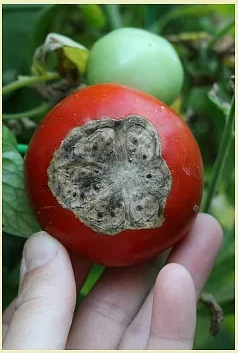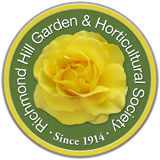As gardeners prepare their gardens for the winter, they are also thinking and planning for next year. If you are planting tomatoes or similar veggies such as peppers, eggplant, summer squashes, and melons, you must remember that they need Calcium!
 Some people who have planted tomatoes might have seen some of their harvest with blackened and rotted bottoms. The distinctive appearance of affected fruits and veggies is that of a circular blackened, slightly sunken rotten spot on the bottom (blossom end) of the fruits. The top of the tomato looks completely normal, but when you pluck it from the vine and turn it over, the black lesion is visible. This is referred to as “Blossom End Rot.” It means certain vegetables, including tomatoes have been both slightly stressed and have a lack of calcium. You can help its stress by properly watering and weeding. And you can avoid it not having enough calcium, by supplementing the soil naturally. Try these steps which I do in my garden every year.
Some people who have planted tomatoes might have seen some of their harvest with blackened and rotted bottoms. The distinctive appearance of affected fruits and veggies is that of a circular blackened, slightly sunken rotten spot on the bottom (blossom end) of the fruits. The top of the tomato looks completely normal, but when you pluck it from the vine and turn it over, the black lesion is visible. This is referred to as “Blossom End Rot.” It means certain vegetables, including tomatoes have been both slightly stressed and have a lack of calcium. You can help its stress by properly watering and weeding. And you can avoid it not having enough calcium, by supplementing the soil naturally. Try these steps which I do in my garden every year.
- During the winter months, I have a container under the kitchen sink and collect eggshells. Now and again, I crush them a bit.
- In the spring, I take those eggshells that I put into the container and place them on a parchment-lined cookie sheet. I then cook that at low heat in the oven for a few minutes, or in a microwave on high power for at least 10 seconds. This will sterilize the eggshells; thus, killing any salmonella that may be there. I do not rinse the eggshells as this will wash away some of the organic matter from the shell which you want to keep.
- In the spring before I use the eggshells, it is best to crush them thoroughly. This increases their surface area. Or for even better results, it is best to grind the eggshells into a fine powder using a pestle and mortar, a high-speed blender or a coffee grinder. Get one just for this purpose from a thrift store or garage sale. Calcium within an eggshell is locked up as calcium carbonate, making it unavailable to plants as it is. Grinding it up into a powder turns it into a form that plants can more readily use. So now your eggshell powder is a slow-release source of calcium - released over several months.
- When I’m planting my tomatoes, peppers, and eggplants, I toss some eggshell powder into the hole that I’ve dug for the new plant.
- I then plant the vegetables in the hole, deep up to the first leaves, pressing firmly on the soil.
- Finally, I sprinkle more eggshell powder over the surface of the beds and then I water the new plants or seedlings.
If you are planting tomatoes and don’t have many eggshells saved, make a quiche or breakfast strata this weekend!
An afterthought – other good uses for calcium ladened powdered eggshells:
- Calcium helps promote the production of healthy cell walls, so this eggshell powder will help your next season’s crops. Its high calcium content will also be great for leafy greens like kale and cabbage.
- If you have a wormery, worms can easily ingest powdered eggshells, and it serves as a grit to aid their digestion and general health. And what do healthy worms mean? Better compost and better soil.
- If you don’t have a worm composter, add them to your general compost pile to help the worms that have moved into it. They’ll enjoy the eggshells and produce better compost for you.
Submitted by Rahe Richards, a member of the Richmond Hill Garden & Horticultural Society
Photo credit: SavvyGardening.com



